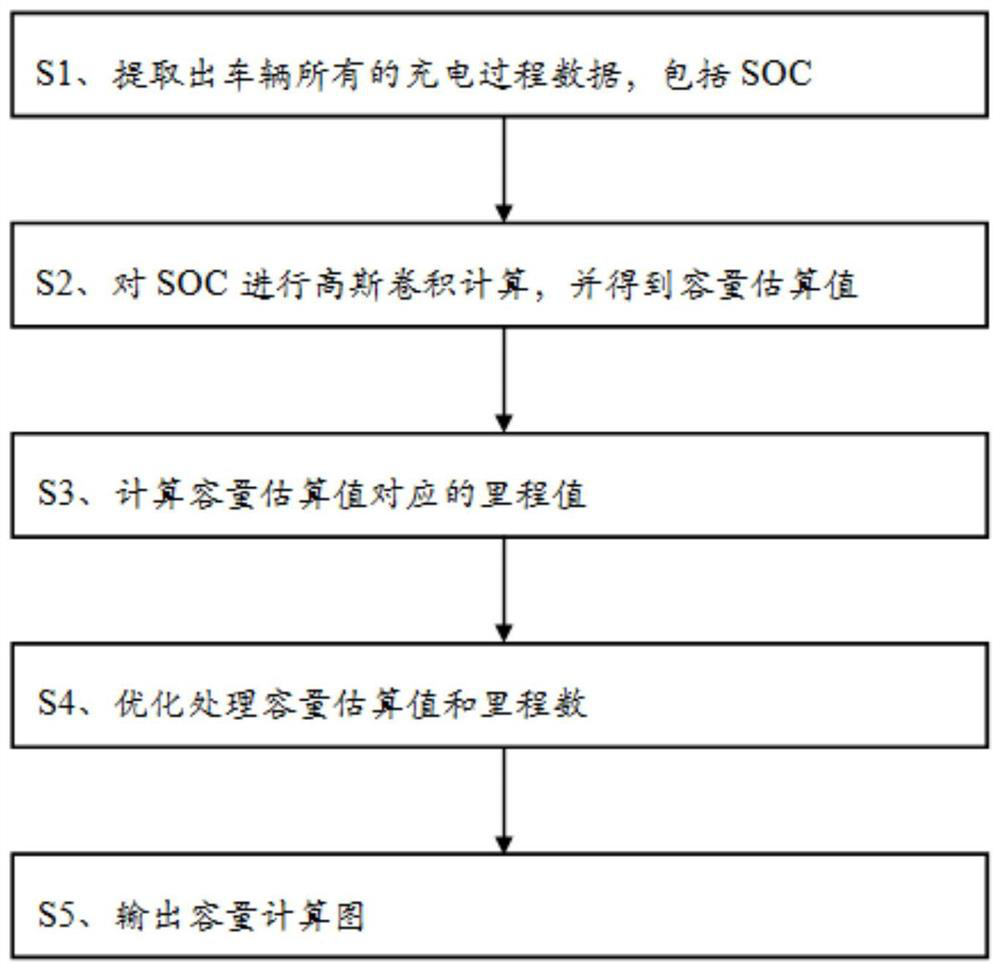A power calculation method based on adaptive Gaussian convolution integral method
A Gaussian convolution and power calculation technology, applied in the direction of measuring electrical variables, measuring electricity, measuring devices, etc., can solve problems such as estimating battery capacity, achieve the effect of simple implementation method, prevent confusion, and reduce the possibility of errors
- Summary
- Abstract
- Description
- Claims
- Application Information
AI Technical Summary
Problems solved by technology
Method used
Image
Examples
Embodiment 1
[0036] An embodiment of a power calculation method based on the adaptive Gaussian convolution integral method of the present invention is basically as attached figure 1 shown, including steps:
[0037] S1. Extract all the charging process data of the vehicle, including SOC;
[0038] S2. Perform Gaussian convolution calculation on the SOC, and obtain a capacity estimation value;
[0039] S3. Calculate the mileage value corresponding to the estimated capacity;
[0040] S4. Optimizing the processing capacity estimate and mileage;
[0041] S5. Output capacity calculation chart.
[0042] In the real car, the on-board hardware can only collect data such as the current, voltage, and temperature of the battery. At the same time, there is almost no full charge and discharge in the real car, and the current maximum available capacity of the battery cannot be directly measured. At the same time, the SOC of the battery is calculated by the BMS rather than directly measured, and there ...
Embodiment 2
[0054] The only difference from Embodiment 1 is that the surface temperature of the battery cell is also used to assist in judging whether the battery cell is abnormal. The data of each battery cell uploaded by the new energy vehicle to the enterprise platform includes temperature data. These temperature data are collected by a temperature sensor. The probe or probe of the temperature sensor is in contact with the battery cell to measure the temperature of the battery cell in real time. surface temperature data.
[0055]In this embodiment, each battery cell has a preset number, and these numbers correspond to the location information of the battery cell, and the location information is specifically the horizontal distance and the vertical distance; where the horizontal distance refers to the distance between the battery cell and the The straight-line distance of the cabin, that is, the distance between the geometric center of the cockpit and the geometric center of the battery...
PUM
 Login to View More
Login to View More Abstract
Description
Claims
Application Information
 Login to View More
Login to View More - R&D
- Intellectual Property
- Life Sciences
- Materials
- Tech Scout
- Unparalleled Data Quality
- Higher Quality Content
- 60% Fewer Hallucinations
Browse by: Latest US Patents, China's latest patents, Technical Efficacy Thesaurus, Application Domain, Technology Topic, Popular Technical Reports.
© 2025 PatSnap. All rights reserved.Legal|Privacy policy|Modern Slavery Act Transparency Statement|Sitemap|About US| Contact US: help@patsnap.com

